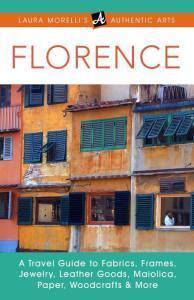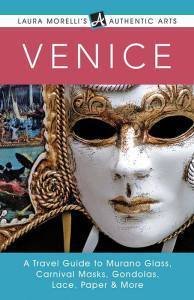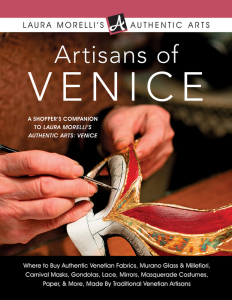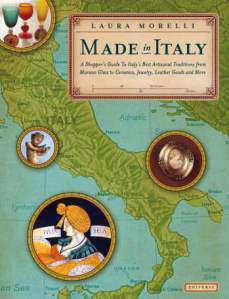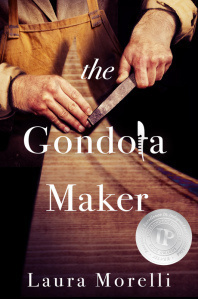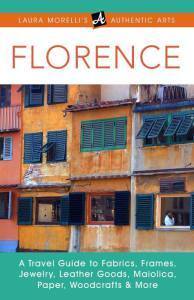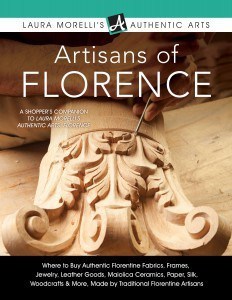Laura Morelli's Blog, page 6
April 6, 2015
Shopping in Florence, Italy
Take one glance at the hundreds of leather jackets flapping in the breeze in the San Lorenzo market, and you will realize how overwhelming shopping in Florence can be. We all want to come home from Florence with a special souvenir, but selecting which leather bag or gold bracelet is the right choice can be intimidating. How do you know if you’re buying something authentic and high quality, something made locally and in a traditional way? How do you gauge how much you should pay, and how do you know if you’re being ripped off? How do you determine if you have fallen prey to one of the city’s many tourist traps? High-pressure sales tactics, the plethora of brand-name knockoffs sold on the street, and a dizzying array of high- and low-quality merchandise marketed alongside one another in the same shops and markets, make for a confusing shopping experience.
Is the pursuit of authenticity worth all the trouble? You bet. Learning about the authenticity of Florentine craft traditions immerses you in the history of the city and the spirit of the Florentines themselves. In fact, I would argue that it’s one of the best ways to experience Florence from the inside out, ensuring that you’ll go home with memories–and hopefully a meaningful souvenir—to treasure for a lifetime.
My mission is to lead travelers to the best of the city’s most traditional arts: fabrics, frames, jewelry, leather goods, maiolica, paper, woodcrafts, and more. My Florence guides include practical tips for locating the most authentic goods in one of the busiest tourist destinations in the world. Packed with useful information on quality and value, along with comprehensive shopping resources, my Florence guides are the perfect complement for travelers wanting to bring home the unique traditions of the capital of the Italian Renaissance.
Learn more:
Learn more about Laura Morelli’s Authentic Arts guidebook series.
The post Shopping in Florence, Italy appeared first on Laura Morelli: Art History, Art Historical Fiction, Authentic Travel.
April 2, 2015
Shopping in Florence: Go Home with a Treasure!
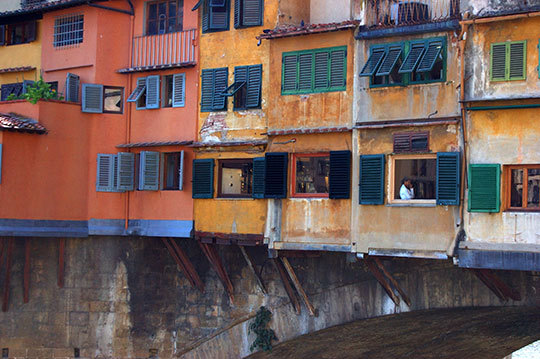
My new pair of Authentic Arts guidebooks to Florence, Italy has just hit the shelves! Yay!
Leather shopping in Florence is one of my most frequently requested topics, and let me tell you, it’s more complex than you might think! Florence is full of tourist traps, and you’ll want to arm yourself with the skills to be able to tell the treasures from the trash.
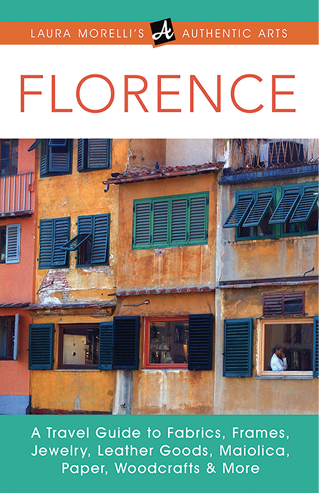

As part of the book launch, everyone who buys the Authentic Arts: Florence guide will get a copy of the companion guide, Artisans of Florence, absolutely free. Just follow the link inside the book:
Amazon | Amazon UK
Barnes & Noble / Nook
Kobo
To make this book launch even more fun, I’m running a contest where you can win paperback copies of the top 10 guidebooks to Florence. Just click the launch giveaway link inside the back of my Authentic Arts: Florence ebook, where you can enter for free.*

The contest closes in 72 hours, so if you want to sign up for your chance to win a big stack of Rick Steves, Frommers, Fodors, National Geographic Traveler, and other great guides (and pick up my brand-spanking new Florence books) check out the links above and grab your copy of Laura Morelli’s Authentic Arts: Florence.
I’ve had a ball working on this project, and it’s my sincere hope that these guides will enrich your experience whether you’re traveling to Italy via plane or via armchair. I can’t wait to hear your feedback!
*Important note: you do NOT have to purchase a book to enter the contest. Visit my Facebook page for details on how else you can enter (no purchase required).
Have you discovered something wonderful in Florence? Drop a comment below. I love to hear your stories!
Click here to download a free copy of my guide, How to Go Shopping on Vacation Without Getting Ripped Off.#wrapper .fusion-button.button-8{text-shadow:none;-webkit-box-shadow:none;-moz-box-shadow:none;box-shadow: none;border-width:0px;color:#ffffff;border-color:#ffffff;}#wrapper .fusion-button.button-8:hover,.fusion-button.button-8:focus,.fusion-button.button-8:active{border-width:0px;border-color:#000000;color:#000000;}#wrapper .fusion-button.button-8{background: #dd9933;
background-image: -webkit-gradient( linear, left bottom, left top, from( #c97800 ), to( #dd9933 ) );
background-image: -webkit-linear-gradient( bottom, #c97800, #dd9933 );
background-image: -moz-linear-gradient( bottom, #c97800, #dd9933 );
background-image: -o-linear-gradient( bottom, #c97800, #dd9933 );
background-image: linear-gradient( to top, #c97800, #dd9933 );}#wrapper .fusion-button.button-8:hover,.button-8:focus,.fusion-button.button-8:active{background: #c97800;
background-image: -webkit-gradient( linear, left bottom, left top, from( #dd9933 ), to( #c97800 ) );
background-image: -webkit-linear-gradient( bottom, #dd9933, #c97800 );
background-image: -moz-linear-gradient( bottom, #dd9933, #c97800 );
background-image: -o-linear-gradient( bottom, #dd9933, #c97800 );
background-image: linear-gradient( to top, #dd9933, #c97800 );}GET MY FREE BOOK
Explore my books:
.imageframe-37 img{border:1px solid #bfbfbf;} 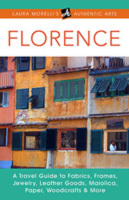 .imageframe-38 img{border:1px solid #bfbfbf;}
.imageframe-38 img{border:1px solid #bfbfbf;} 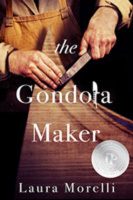 .imageframe-39 img{border:1px solid #bfbfbf;}
.imageframe-39 img{border:1px solid #bfbfbf;} 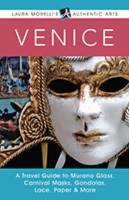 .imageframe-40 img{border:1px solid #bfbfbf;}
.imageframe-40 img{border:1px solid #bfbfbf;} 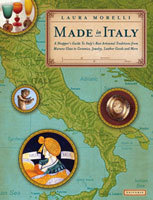
Learn more about Laura Morelli’s Authentic Arts guidebook series.
The post Shopping in Florence: Go Home with a Treasure! appeared first on Laura Morelli: Art History, Art Historical Fiction, Authentic Travel.
New books–and a bunch of freebies!
Leather shopping in Florence is one of my most frequently requested topics, and let me tell you, it’s more complex than you might think! Florence is full of tourist traps, and you’ll want to arm yourself with the skills to be able to tell the treasures from the trash.


As part of the book launch, everyone who buys the Authentic Arts: Florence guide will get a copy of the companion guide, Artisans of Florence, absolutely free. Just follow the link inside the book:
Amazon | Amazon UK
Barnes & Noble / Nook
Kobo
To make this book launch even more fun, I’m running a contest where you can win paperback copies of the top 10 guidebooks to Florence. Just click the launch giveaway link inside the back of my Authentic Arts: Florence ebook, where you can enter for free.*

The contest closes in 72 hours, so if you want to sign up for your chance to win a big stack of Rick Steves, Frommers, Fodors, National Geographic Traveler, and other great guides (and pick up my brand-spanking new Florence books) check out the links above and grab your copy of Laura Morelli’s Authentic Arts: Florence.
I’ve had a ball working on this project, and it’s my sincere hope that these guides will enrich your experience whether you’re traveling to Italy via plane or via armchair. I can’t wait to hear your feedback!
*Important note: you do NOT have to purchase a book to enter the contest. Visit my Facebook page for details on how else you can enter (no purchase required).
The post New books–and a bunch of freebies! appeared first on Laura Morelli: Art History, Art Historical Fiction, Authentic Travel.
March 20, 2015
Traditional Types of Murano Glass
It would be easy to fill an entire book with terminology pertaining specifically to Murano glass. Murano glass is an exceptionally complex art with many different techniques and combinations. Without diving too deeply into the minutiae of technique and terminology, here are some of the main types of glass that you will come to recognize if you take the time to have a careful look.
Avventurina
Avventurina refers to colored glass that incorporates iridescent particles, sometimes gold, copper, chrome, or other metals. This process has been used on Murano since the early seventeenth century and is sometimes called pasta stellaria, referring to its star-studded appearance.
Filigree (retortoli and reticello)
Filigree (filigrana) involves incorporating narrow rods of glass on the surface of a vessel or as a freestanding work. Creating designs with thin, delicate rods of glass is exceptionally challenging, requiring a high level of patience and skill. The two most common subtypes of filigree are retortoli and reticello. Retortoli fligree has the effect of “twisted” canes of glass, achieved by stretching and rotating the glass as it is heated. Reticello refers to a type of decoration incorporated into a glass vessel that gives the effect of lattice or cagework.
Beadwork and Jewelry
Murano glass techniques lend themselves naturally to the making of jewelry and beads, and some Murano glassmakers are specialists in this area. Some of the more accomplished masters pair glass with incised silver and other precious metals.
Enameled glass
By the fiteenth century glassmakers finished deeply hued glass pieces, only to embellish them with enamelled colors and gilding applied with paintbrushes. Because the enamelling process requires a second high-temperature firing to seal the colors on the exterior surface, putting the vessel at risk of deforming, it is a particularly challenging technique.
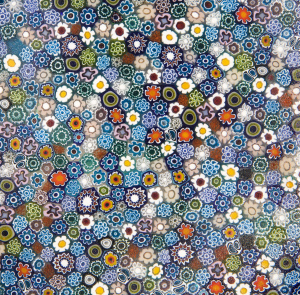
Murrina and millefiori
The murrina technique involves slicing canes of glass to expose transverse patterns, and it can be used to create repeating decorative elements. Glassmakers have made murrina since ancient times but Venetian glassmakers developed a renewed interest in it during the Renaissance.
Literally “thousand flowers,” millefiori is a type of murrina. In millefiori, the glassmaker slices rods of layered glass to expose a flowerlike design on a clear or light blue disk of glass. Millefiori is popular for pendants and earrings, since an individual flower can be isolated for a simple and beautiful effect.
Incised or engraved glass
Incised or engraved glass involves creating a fine-lined figural or decorative design on the glass, an extremely paintstaking art whose effects are particulalry beautiful given the delicacy of Venetian glass. Unlike thicker glass from Bohemia and elsewhere, Venetian engravers cannot cut far into the thinly blown glass on Murano; instead, the designs lie right on the surface. Today engravers use diamond-point wheels as well as other tools made with different metals and hard stones to create lines of various widths and levels of opacity.
Mirrors
It is commonly accepted that a Frenchman named Master Robert from Lorraine introduced plate glass to Murano, thanks to a permit from the Venetian government that allowed Master Robert to stay and work on Murano for a period of six months in 1493. In addition to introducing the idea of plate glass to replace leaded bottle glass in windows, plate glass also began to be used for mirrors, replacing the metal ones that Italians used prior to that time. In 1507, the Venetian Council of Ten granted permission for mirrors to be made on Murano. The process involved glassblowers, metal workers who prepared the tin and mercury backing, and a craftsman who fused the metal and glass to finish the mirror. The art of engraving or incising mirrors continues today, and these ornate mirrors are enjoying renewed vogue among today’s interior designers.
Vetro pezzato
In vetro pezzato or “pieced glass,” large bits of different colored glass are melded together, giving the appearance of a patchwork quilt.
The post Traditional Types of Murano Glass appeared first on Laura Morelli: Art History, Art Historical Fiction, Authentic Travel.
Traditional Types of Murano Glass
It would be easy to fill an entire book with terminology pertaining specifically to Murano glass. Murano glass is an exceptionally complex art with many different techniques and combinations. Without diving too deeply into the minutiae of technique and terminology, here are some of the main types of glass that you will come to recognize if you take the time to have a careful look.
Avventurina
Avventurina refers to colored glass that incorporates iridescent particles, sometimes gold, copper, chrome, or other metals. This process has been used on Murano since the early seventeenth century and is sometimes called pasta stellaria, referring to its star-studded appearance.
Filigree (retortoli and reticello)
Filigree (filigrana) involves incorporating narrow rods of glass on the surface of a vessel or as a freestanding work. Creating designs with thin, delicate rods of glass is exceptionally challenging, requiring a high level of patience and skill. The two most common subtypes of filigree are retortoli and reticello. Retortoli fligree has the effect of “twisted” canes of glass, achieved by stretching and rotating the glass as it is heated. Reticello refers to a type of decoration incorporated into a glass vessel that gives the effect of lattice or cagework.
Beadwork and Jewelry
Murano glass techniques lend themselves naturally to the making of jewelry and beads, and some Murano glassmakers are specialists in this area. Some of the more accomplished masters pair glass with incised silver and other precious metals.
Enameled glass
By the fiteenth century glassmakers finished deeply hued glass pieces, only to embellish them with enamelled colors and gilding applied with paintbrushes. Because the enamelling process requires a second high-temperature firing to seal the colors on the exterior surface, putting the vessel at risk of deforming, it is a particularly challenging technique.
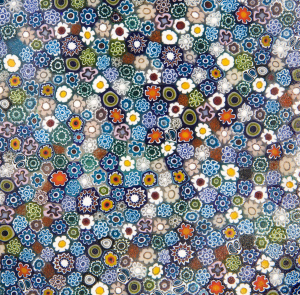
Murrina and millefiori
The murrina technique involves slicing canes of glass to expose transverse patterns, and it can be used to create repeating decorative elements. Glassmakers have made murrina since ancient times but Venetian glassmakers developed a renewed interest in it during the Renaissance.
Literally “thousand flowers,” millefiori is a type of murrina. In millefiori, the glassmaker slices rods of layered glass to expose a flowerlike design on a clear or light blue disk of glass. Millefiori is popular for pendants and earrings, since an individual flower can be isolated for a simple and beautiful effect.
Incised or engraved glass
Incised or engraved glass involves creating a fine-lined figural or decorative design on the glass, an extremely paintstaking art whose effects are particulalry beautiful given the delicacy of Venetian glass. Unlike thicker glass from Bohemia and elsewhere, Venetian engravers cannot cut far into the thinly blown glass on Murano; instead, the designs lie right on the surface. Today engravers use diamond-point wheels as well as other tools made with different metals and hard stones to create lines of various widths and levels of opacity.
Mirrors
It is commonly accepted that a Frenchman named Master Robert from Lorraine introduced plate glass to Murano, thanks to a permit from the Venetian government that allowed Master Robert to stay and work on Murano for a period of six months in 1493. In addition to introducing the idea of plate glass to replace leaded bottle glass in windows, plate glass also began to be used for mirrors, replacing the metal ones that Italians used prior to that time. In 1507, the Venetian Council of Ten granted permission for mirrors to be made on Murano. The process involved glassblowers, metal workers who prepared the tin and mercury backing, and a craftsman who fused the metal and glass to finish the mirror. The art of engraving or incising mirrors continues today, and these ornate mirrors are enjoying renewed vogue among today’s interior designers.
Vetro pezzato
In vetro pezzato or “pieced glass,” large bits of different colored glass are melded together, giving the appearance of a patchwork quilt.
You might enjoy:

March 18, 2015
A Brief History of the Venetian Gondola
In the heyday of the Venetian Republic, some ten thousand gondolas transported dignitaries, merchants, and goods through the crowded canals and lagoons of the water-logged city. Today, only about four hundred gondole glide through the waterways of Venice. Across the city and the outlying islands, a handful of boatyards or squeri still make and repair gondolas using modern techniques and power tools, but each year, fewer and fewer authentic gondolas are turned out by hand. A small group of specialized master boat builders working in historic boatyards now holds the craft—literally—in its hands.
Although the gondola has become the symbol of Venice, the city once teemed with diverse types of handmade wooden boats, from utilitarian rafts to canal ferries to the famous Venetian war galleys–which the government bragged its craftsmen could rig in a single day–and the doge’s own impossibly ornate, gilded barge, the Bucintoro. That’s not surprising when you realize that Venetians have long relied on boats for transporting everything.
The Venetian gondola began as a much simpler contraption than the elaborate boats now synonymous with Venice. To my knowledge no complete Venetian gondola made prior to the mid-1800s survives intact; only a handful of iron prows from the Renaissance era have endured the humid Venetian climate that destroys anything made of wood, even of the highest order of craftsmanship.
The earliest documentary evidence of the Venetian gondola dates to 1094, when the word gondolum is used in a letter from the Doge, Vitale Falier, to the people of Loreo. We must wait another four hundred years for visual evidence of the distinctive boat. The earliest depictions of the Venetian gondola let us imagine what these early boats might have looked like. We can envision these dark, elegant boats with the help of a series of beautiful wall paintings executed by Vittore Carpaccio in the 1490s for the Church of Saint Ursula, now preserved in the Accademia in Venice. In this cycle of paintings, gondoliers appear to maneuver their boats using the oarlock, a manner of rowing that is not too different than that of today.
Not only Venetians but also foreign visitors must have been impressed by these distinctive boats, since printmakers such as the Swiss artist Joseph Heinz the Younger and the Dutch author and statesman Nicolaes Witsens disseminated views of the gondola in woodcut prints and engravings that made their way across Europe. A woodcut by the Swiss artist Jost Amman portrays a gondola with a fore and aft oarlock, rowed by two oarsmen, in “Grand Procession of the Doge of Venice,” published in Frankfurt in 1597. A sketchy carving on an altarpiece erected by gondola makers in 1628 inside the Church of San Trovaso depicts the familiar arc of the gondola with its spiky iron prow decorations, the ferri, on either end and a covered passenger compartment, or felze.
More elaborate oarlocks, upholstery, carving, and the peculiar asymmetrical form of modern gondolas, which allows for more effective rowing, all developed from the 1700s onward. Since the late 1800s, gondola makers have made the left side of the boat wider than the right, giving the correct counterbalance to the force created by a single gondolier and allowing him to row through crowded spaces only from the right side, and without lifting his oar from the water.
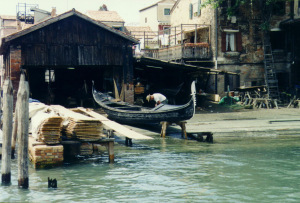
From the beginning, members of the boat-making guilds abided by a set of strict social codes as well as an impressive body of written rules called the mariregole. These rules governed integral aspects of the boat makers’ lives: everything from regulating their apprentices and salaries to dowering their daughters, ministering to their sick, providing for their retired, and burying their dead. Above all, it was expected that a son would follow in his father’s footsteps, and pass the torch of the gondola-building traditions of the family squero to the next generation.
Much like a modern-day taxi system, many gondolas were leased to boatmen who serviced the ferry stations, or traghetti, that dotted the canals. Even though Venetian boatmen once numbered in the tens of thousands, because they were members of the lower class they remain relatively silent in historical documents except for random incidental accounts, many of which involve infractions that took place in gondolas, including cursing, gambling, extorting passengers, or worse.
Wealthy Venetians owned one or more of their own private gondolas, and they employed their own boatmen as part of their servant staff to maintain their boats, dock them in private boathouses, and remain at their masters’ disposal to ferry them around the city. Eventually, the gondola became a status symbol much like an expensive car, with custom fittings, elaborately carved and sometimes gilded ornamentation, and seasonal fabrics such as silk and velvet. Even after 1562, when authorities banned what was seen as sinfully ostentatious ornamentation and decreed that all but ceremonial gondolas be painted black, some wealthy Venetians chose to pay the fines, a small price to keep up appearances.
The post A Brief History of the Venetian Gondola appeared first on Laura Morelli: Art History, Art Historical Fiction, Authentic Travel.
Two weeks away! Laura Morelli’s Authentic Arts: Florence
Sign up to receive an email when the Florence guides are published.
Learn more about Laura Morelli’s Authentic Arts guidebook series.
Excerpt from Laura Morelli’s Authentic Arts: Florence
If you hold even a passing interest in art history, it’s hard not to fall in love with Florence. In this birthplace of the Italian Renaissance, beauty, order, and a classical aesthetic breathe life into every street, every square, every building, and every bridge. Florence’s native sons—Botticelli, Brunelleschi, da Vinci, Donatello, Giotto, Michelangelo, and many others—still inform the way that the Western world views painting, sculpture, and architecture. Their legacy marks Florentine culture as a timeless benchmark of beauty and technical excellence.
As I pursued my own studies in art history, I couldn’t wait to travel to Florence to witness those famous masterpieces firsthand. When I arrived, however, I discovered that living artists were practicing centuries-old Florentine traditions in workshops and studios across the city. I found masters of leather etching gilded scrolls into belts and bags; women weaving silk on three-century-old looms; fifth-generation bookbinders punching letters into the spines of ancient texts; goldsmiths using their great-grandparents’ tools; even a master carrying on a three-hundred-year-old tradition of making powdered wigs. I realized that these unsung heroes quietly carried on a legacy unbroken from the time of medieval guilds. I couldn’t believe that while so many visitors knew about Michelangelo and da Vinci, so few knew about these living traditions and their makers.
It became my mission to lead travelers beyond the tourist traps, helping them discover authentic traditions and their makers, and come home with great treasures in their suitcases. My focus is cultural immersion through a greater appreciation of artistic traditions and the people who still practice them. It’s impossible not to want to take a little piece of Florence home with you. In our world of mass production, many of us yearn for unique, culturally authentic, and immersive experiences. I can think of no better way to appreciate Florentine culture than by experiencing the stories, the people, and the beautiful objects behind the timeless traditions of this captivating city of art.
Sign up to receive an email when the Florence guides are published.

March 12, 2015
Where Would I Be Without You?
We authors wouldn’t be anywhere without our readers. In fact, only one group of people really matters to authors (and no, it’s not my editors, my designers, or my proofreaders, even though I do love them!).
It’s YOU, the reader.
So, I figured, why not encourage my readers to be part of my journey? After all, it’s all thanks to you that I get to write in the first place – shouldn’t you get to come along, too? It’s your encouragement and kind reviews that keep me going, but, until now, I’ve never had a way of keeping tabs on all the wonderful things you’ve been doing for my work, meaning that I haven’t been able to thank you personally.
I think I’ve come up with a solution. Starting today, I’m launching the Laura Morelli Launch Team… Here’s what it entails:
Sign up below to join my Launch Team, and, in return you’ll get:
Free advance preview copies of EVERY BOOK I release
Cool prizes. I’ll add your name my regular raffles to win signed paper copies, amazon gift cards, Kindle ereaders, and other swag (in addition to the monthly book draws I run for my regular newsletter).
The Launch Team is completely different to being part of my mailing list. You’ll be part of a select group of super-awesome readers. In addition to getting free copies of every book I release before anyone else sees it, you will experience exactly what impact your support has on the success of my work.
If this sounds like something you’d like to be part of, there’s only one catch. Being part of the Launch Team means I’ll ask you to leave a review of the books you receive within a certain time period after receiving your copies (usually about 2 weeks). As far as catches go, I’m hoping that’s not too bad! So, if you’d like to be part of the team, just sign up here!
After you’ve signed up, you’ll be asked to confirm your email address and I’ll send you more details. As always, if you have any questions at all, please feel free to email me at laura (at) lauramorelli.com.
Thanks for all your support, friends!
Laura Morelli

March 11, 2015
A Brief History of the Venetian Gondola
In the heyday of the Venetian Republic, some ten thousand gondolas transported dignitaries, merchants, and goods through the crowded canals and lagoons of the water-logged city. Today, only about four hundred gondole glide through the waterways of Venice. Across the city and the outlying islands, a handful of boatyards or squeri still make and repair gondolas using modern techniques and power tools, but each year, fewer and fewer authentic gondolas are turned out by hand. A small group of specialized master boat builders working in historic boatyards now holds the craft—literally—in its hands.
Although the gondola has become the symbol of Venice, the city once teemed with diverse types of handmade wooden boats, from utilitarian rafts to canal ferries to the famous Venetian war galleys–which the government bragged its craftsmen could rig in a single day–and the doge’s own impossibly ornate, gilded barge, the Bucintoro. That’s not surprising when you realize that Venetians have long relied on boats for transporting everything.
The Venetian gondola began as a much simpler contraption than the elaborate boats now synonymous with Venice. To my knowledge no complete Venetian gondola made prior to the mid-1800s survives intact; only a handful of iron prows from the Renaissance era have endured the humid Venetian climate that destroys anything made of wood, even of the highest order of craftsmanship.
The earliest documentary evidence of the Venetian gondola dates to 1094, when the word gondolum is used in a letter from the Doge, Vitale Falier, to the people of Loreo. We must wait another four hundred years for visual evidence of the distinctive boat. The earliest depictions of the Venetian gondola let us imagine what these early boats might have looked like. We can envision these dark, elegant boats with the help of a series of beautiful wall paintings executed by Vittore Carpaccio in the 1490s for the Church of Saint Ursula, now preserved in the Accademia in Venice. In this cycle of paintings, gondoliers appear to maneuver their boats using the oarlock, a manner of rowing that is not too different than that of today.
Not only Venetians but also foreign visitors must have been impressed by these distinctive boats, since printmakers such as the Swiss artist Joseph Heinz the Younger and the Dutch author and statesman Nicolaes Witsens disseminated views of the gondola in woodcut prints and engravings that made their way across Europe. A woodcut by the Swiss artist Jost Amman portrays a gondola with a fore and aft oarlock, rowed by two oarsmen, in “Grand Procession of the Doge of Venice,” published in Frankfurt in 1597. A sketchy carving on an altarpiece erected by gondola makers in 1628 inside the Church of San Trovaso depicts the familiar arc of the gondola with its spiky iron prow decorations, the ferri, on either end and a covered passenger compartment, or felze.
More elaborate oarlocks, upholstery, carving, and the peculiar asymmetrical form of modern gondolas, which allows for more effective rowing, all developed from the 1700s onward. Since the late 1800s, gondola makers have made the left side of the boat wider than the right, giving the correct counterbalance to the force created by a single gondolier and allowing him to row through crowded spaces only from the right side, and without lifting his oar from the water.
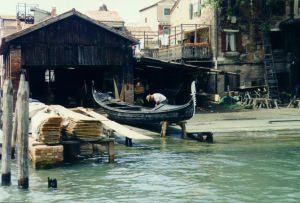
From the beginning, members of the boat-making guilds abided by a set of strict social codes as well as an impressive body of written rules called the mariregole. These rules governed integral aspects of the boat makers’ lives: everything from regulating their apprentices and salaries to dowering their daughters, ministering to their sick, providing for their retired, and burying their dead. Above all, it was expected that a son would follow in his father’s footsteps, and pass the torch of the gondola-building traditions of the family squero to the next generation.
Much like a modern-day taxi system, many gondolas were leased to boatmen who serviced the ferry stations, or traghetti, that dotted the canals. Even though Venetian boatmen once numbered in the tens of thousands, because they were members of the lower class they remain relatively silent in historical documents except for random incidental accounts, many of which involve infractions that took place in gondolas, including cursing, gambling, extorting passengers, or worse.
Wealthy Venetians owned one or more of their own private gondolas, and they employed their own boatmen as part of their servant staff to maintain their boats, dock them in private boathouses, and remain at their masters’ disposal to ferry them around the city. Eventually, the gondola became a status symbol much like an expensive car, with custom fittings, elaborately carved and sometimes gilded ornamentation, and seasonal fabrics such as silk and velvet. Even after 1562, when authorities banned what was seen as sinfully ostentatious ornamentation and decreed that all but ceremonial gondolas be painted black, some wealthy Venetians chose to pay the fines, a small price to keep up appearances.
You might enjoy:

March 3, 2015
The Essence of Venetian Style
The opulence of Venetian style is deeply rooted in time. In the history of art, Venice plays a unique and important role. In addition to its novel political organization—hailed as a model of government during the Middle Ages and the Renaissance—the Venetian Republic’s influence stretched far beyond the waterlogged city. Its geographical location, poised on the edge of the Eastern world, made it an important point of departure for western pilgrims and crusaders.
In the Middle Ages the powerful Republic of Venice colonized the eastern Mediterranean. Venetian merchants and mercenaries alternately pummeled and traded with some of the most illustrious cities of the East, especially Constantinople. This strategic location also made Venice a point of entry for luxury goods and plundered wares from the Byzantine and Arab worlds. As Venetian Crusaders looted Eastern cities and brought home their booty, local artists were influenced by the modes of the Byzantine and Islamic worlds. The city’s artistic traditions and forms bear witness to this historical position as a crossroads of East and West. In turn, many of the goods produced in the Venetian Republic were exported or copied elsewhere in Europe.
In addition to this nod toward Eastern modes, Venetian art is also renowned for its luminous colors and shimmering surfaces. Surrounded by the sparkling, reflective waters of the Venetian lagoon, it is only natural that artists would feel inspired to replicate these effects. Artists sought to achieve the most vibrant colors: the rich ruby, sapphire, green and amber used in painting, mosaic, glass, marble, and other materials. Venetian artists used a variety of techniques to impart this lucidity and richness to their materials. Medieval Venetian mosaicists, for example, experimented with applying colored oxides over silver or translucent glass so that light would be reflected back from the tesserae, or pieces, they assembled to create mosaics. Venetian painters of the 1500s experimented with grinding shards of Murano glass into their paint pigments to impart a rich translucency and shimmering quality to their oil paintings, a particular Venetian practice whose results brought these painters fame across Europe.
Even after the decline of the Venetian Republic, the distinctive Venetian spirit continued to pervade the city’s artistic traditions. Today in Venice, many of the trades of the past are still living traditions. The medieval guilds may be long gone, but their arts, their techniques, and their soul still thrive in Venice. The skills, the forms, the knowledge, and more importantly, the spirit of the past, is kept alive in the hands of a small number of individuals who take pride in their city’s unique visual essence.
You might enjoy:


